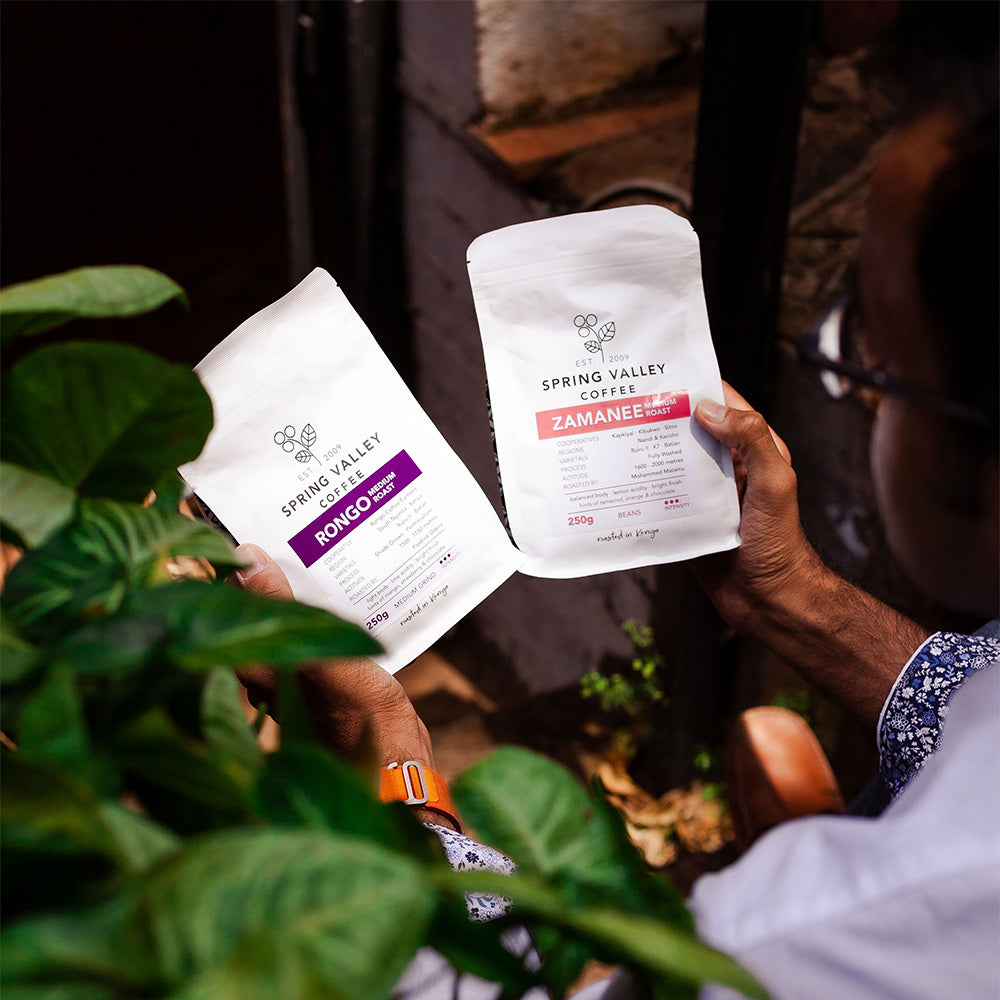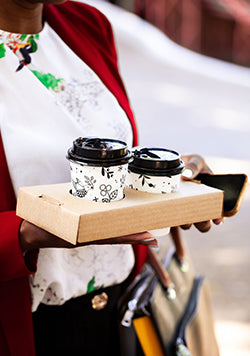
Walking to our roastery one morning a few weeks after we bought Spring Valley Coffee in 2018, I saw a bag of our coffee on the side of the road, presumably having fallen off the back of a garbage truck.
Almost from the day we took over the business, we have been acutely aware of the environmental impact of our business, from the roasting process, to the packaging we use — not to mention the single-use cups our customers were using almost daily.
Do the Right Thing — for coffee and the environment
One of our core values is to Do the Right Thing, which amongst other things, means that we take a long-term view; combined with a deep sense of responsibility to protect our environment, we believe that we have to be a force for good as we grow our business.
Bags, which represent a significant part of our business, are the first area we have begun to address. It is worth understanding the factors that we consider before selecting packaging materials:
- protecting the coffee: oxygen, carbon dioxide, light & heat are all enemies of great coffee; aluminium foil & plastic laminates provide an effective barrier against these;
- aesthetics: easy to brand, keep clean, and transport;
- affordability: being able to keep a bag of coffee affordably priced;
- ease of recycling.
We always had the intention to move to packaging that is more sustainable; it has taken longer than we would like, and has taken more (mis)steps than we would have wanted, but they are all lessons learnt getting us to where we are today!
We also believe that actions speak louder than words, so committed to planting one seedling through Seedballs Kenya for every non-sustainable bag that we have used.
Evolution of our Packaging
Over time, our coffee packaging solution has evolved from:
Aluminium Foil Bags which we inherited when we took over the business in mid 2018:
- While these were simple, with multiple layers of foil & plastic laminates such as PET (polyethylene terephthalate) & PE (polyethylene);
- They neither looked nor were environmentally friendly, so we made the change to…
Kraft Paper Bags in late 2018, not only because they looked & felt artisanal and hand-made, but because we believed that they were easier to recycle and better for the environment:
- However, we quickly learnt that in addition to the Kraft paper, these bags are reinforced with up to four layers of aluminium foil & plastic film laminates to improve the barrier properties;
- We came to conclusion that Kraft is the worst, as the paper layer is virtually impossible to separate from the aluminium & plastic film layers of PET & PE, so we made a change in 2019 to…
Plastic Bags. These are multi-layer plastic bags which forward-thinking coffee roasters globally were moving to as they provide all the positive attributes of the barriers, but without Kraft paper and aluminium foil layers, making it easier to recycle:
- We saw it as a stop-gap until we were able to introduce a compostable bag;
- As we wound down our stock and were about to introduce what we believed was a residential compostable bag, COVID struck!
- In late 2020 we placed our first order for…
Compostable Bags, which arrived in time for the Christmas 2020 season:
- Compostable bags are made of PLA (polylactic acid), a toxin-free bioplastic: (a bioplastic is a polymer that is made from a renewable resource, such as maize, cornstarch or sugarcane);
- Polymers are ideally broken down through industrial composting, and where available (primarily in the global north), this takes about 3 weeks;
- In the absence of industrial composting, PLA can take 3 months to decompose in controlled composting environments: On further inquiry, we learnt that in order to make the PLA break down faster, it often contains chemical additives which pollute the compost flow;
- Given how long controlled composting takes, we began to understand that this was too long for waste facilities to store their compost piles, so the bags were being dumped in landfills or incinerated!
- I was both shocked and surprised to learn that we got it wrong, and that we had to go back to the drawing board;
- At the same time, when checking with our manufacturing partners, we were informed that PLA is not home compostable at this time, taking us to…
LDPE-4
Our primary objective of visiting the annual Specialty Coffee Association show was to develop a better understanding of sustainable packaging options out there — and determine what is right for the environment, for us and for our customers — especially in light of all the noise & marketing spiel touting “recyclable” & “compostable”.
After numerous conversations, workshops & vibrant debate with coffee packaging industry professionals & thought leading coffee roasters, we have been able to take the next steps in the evolution of our packaging, with one major difference — taking into consideration local waste & recycling capabilities in our primary market, Kenya.
With that in mind, and with the input of our recycling and waster partners, we have come to the conclusion that LDPE (Low Density Polyurethane) is the right solution for Spring Valley Coffee and Kenya.
We believe that the future of coffee packaging is in mono-materials — coffee bags which are made from a single material, making them easier to collect, sort and recycle in emerging markets:
- We have been working with a number of packaging partners to find a mono-material that can be used for the bag, from bag itself to the degassing valve and the resealable zipper;
The mono-material that we believe is appropriate for Kenya is LDPE:
- LDPE is free from harmful chemicals, making it safe for food packaging — its primary application;
- It is a semi-rigid polymer that is resistant to most chemicals, oils & temperature extremes; it also has a low water absorption factor & high tensile strength — all of these make it attractive for recycling;
- As a thermoplastic, it can be melted and reformed infinitely without hampering its strength or flexibility, making it particularly suitable for recycling;
- What sets LDPE apart from traditional plastics is the ease and affordability with which it can be recycled;
- certified as recyclable under European standard DIN EN 1343;
- The good news is that when clearly marked with plastic resin code “4” and the recycling symbol “LDPE-4”, collectors in the landfill actively seek it out as there is a market for it;
- We have identified two local partners who actively reuse LDPE-4, and will shortly start the process of working with them to ensure that our coffee bags end up in the right place, both directly through bags being returned to us, and also through the traditional waste management services.
As we move to the next evolution in our packaging, I am encouraged by how much our team and customers join me in deeply caring about our environment. We are grateful to be in a position where we can make these changes — and hope that by sharing where we have come from, the challenges we have faced, where we are going, it will help others in our industry make more conscious choices when they make packaging decisions.
A huge “thank you” to Stephanie Gonzalez of Savor Brands for discussing, debating and helping further educate me on this, as well as our local recycling partner Taka Taka Solutions. And of course, my good friend Juliet Kennedy at Greenspoon (a recently accredited BCorp!), who continues to be an inspiration and shares our deeply-held belief that business not only can, but should be a force for good!
I would also like to acknowledge MTPak, SwissPack & Dutch Coffee Pack for answering my countless questions.

